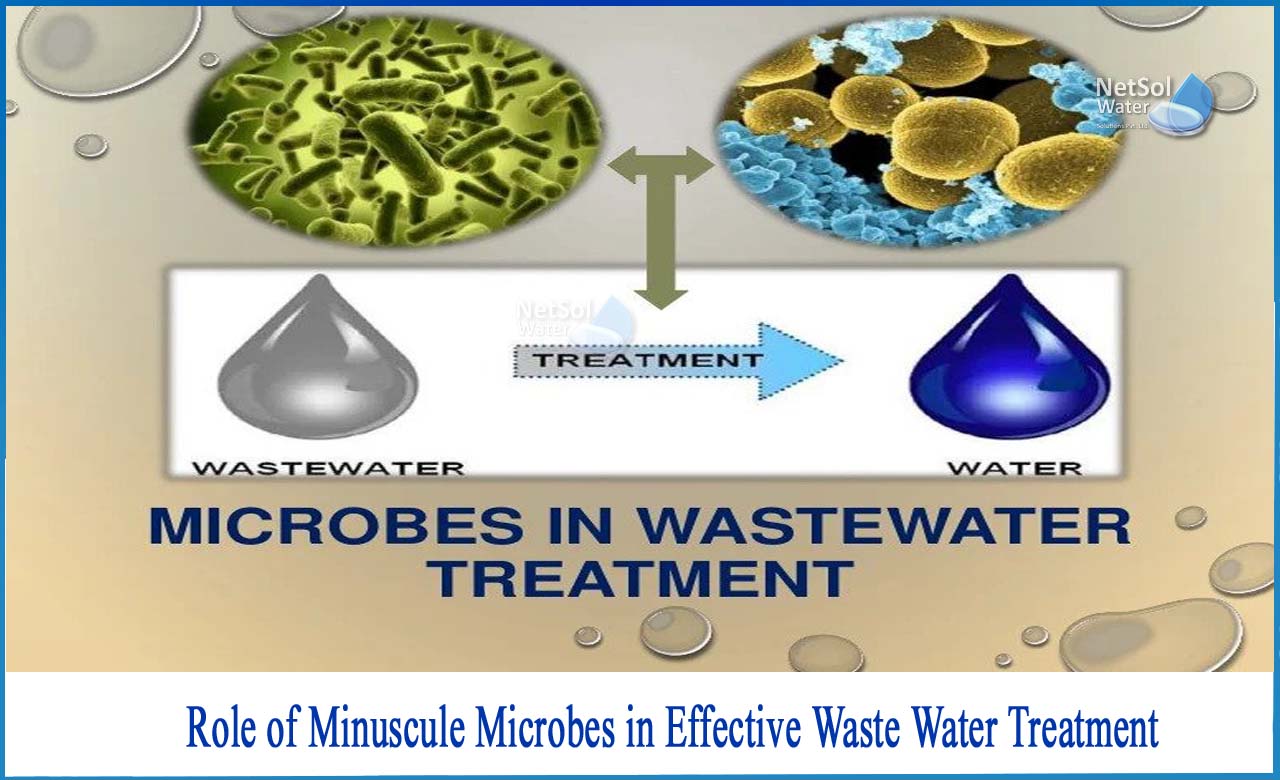What is the role of minuscule microbes in wastewater treatment?
Microbes are microscopic biological agents that can be found all over the planet but are too small for the naked eye to see. They live in the water, on land, and in the air. The human body contains millions of these germs, often known as microorganisms. Some microbes make us sick, while others are essential to our survival.
“Microbes that are incredibly little are known as minuscule microorganisms”.
Waste water Treatment
In simple terms, wastewater is all the unclean water that is discharged into the environment as effluent from residential, agricultural, and industrial systems. Hazardous substances, poisons, solid particles, organic materials, and sediments are abundant in this area. It disrupts the environment without proper wastewater treatment since it is highly toxic to humans, animals, and plant ecosystems.
As a result, the major goal of the wastewater treatment process is to discharge wastewater into the environment without endangering human health or the ecosystem.
Three main phases are involved in the most typical method of wastewater treatment:
1: Initial treatment - The primary treatment separates any particles present in the liquid. It entails a flotation and settlement process that produces cleared effluent that is contaminated.
2: Secondary treatment - The goal of secondary treatment is to treat the effluent from primary treatment again to remove any remaining organics or suspended particles. Secondary treatment, which usually comes after primary treatment, entails the elimination of biodegradable dissolved and colloidal organic materials utilising aerobic and anaerobic biological treatment techniques.
Aerobic biological treatment uses aerobic bacteria that decompose the organic materials in the wastewater and produce more microorganisms in the presence of oxygen. In anaerobic conditions, bacteria flourish in the absence of oxygen to digest organic contaminants, resulting in the creation of methane.
3: Tertiary treatment - Tertiary treatment is used to provide a last treatment stage before wastewater is discharged to the receiving environment. More than one tertiary treatment approach may be used at each treatment plant. This treatment can include sand filtration, filtration using a reverse osmosis, UV radiation, carbon activated charcoal filter, or disinfection. Disinfection is always the last step when it is employed. "Effluent polishing" is another term for it.
Usage of microbes in waste water treatment
One of the most successful methods for secondary wastewater treatment is to use microscopic powerhouses known as microorganisms.
Although we associate microorganisms with a variety of diseases and injury, there are also beneficial bacteria that contribute to the environment's health and safety. Toxic chemicals such as ammonia, nitrite, and hydrogen sulphide are eliminated by the intense microbial activity. Multiple species of microorganisms remove nitrogen and phosphorus, demonstrating its efficacy in wastewater treatment.
In the secondary treatment stage, wastewater often comprises a wide spectrum of organic matter and partially digested trash. After basic treatment, the microorganisms work quickly to breakdown and eliminate any remaining solid waste.
Role of Minuscule microbes
It's incredible how important microscopic bacteria are in wastewater treatment.
- Aerobic Bacteria - Aerobic bacteria are utilised in the aeration process, which involves bringing air and water into close contact.
- Anaerobic Bacteria - Anaerobic bacteria's main purpose is to break down sludge and reduce its volume. Phosphorus levels are also reduced.
- Facultative microbes — Depending on the circumstances, facultative bacteria can function as both aerobic and anaerobic bacteria, though they favour the former.
Conclusion
Effluent treatment plants are designed to treat wastewater by removing harmful chemicals and breaking down organic materials. In this regard, the use of potent microorganisms is not only preferable to physical treatment but also cost-effective.
With the support of natural bacteria, Netsol has developed a number of biological treatment treatments.
One such method is microencapsulation. It is a method of encasing small particles or droplets in a covering to generate minuscule capsules with therapeutic properties. It is used to include food ingredients, enzymes, cells, and other things on a micro metre scale. Because it is microencapsulated in powdered form, it stimulates high biomass generation and accelerates COD/BOD reduction.
Netsol Water is Greater Noida-based leading water & wastewater treatment plant manufacturer. We are industry's most demanding company based on client review and work quality. We are known as best commercial RO plant manufacturers, industrial RO plant manufacturer, sewage treatment plant manufacturer, Water Softener Plant Manufacturers and effluent treatment plant manufacturers. Apart from this 24x7 customer support is our USP. Call on +91-9650608473, or write us at enquiry@netsolwater.com for any support, inquiry or product-purchase related query.



